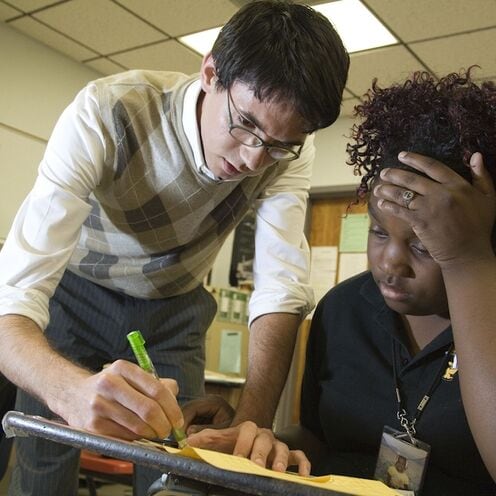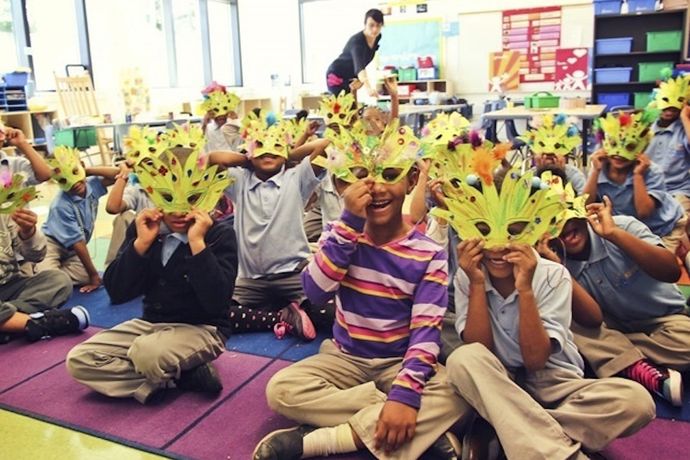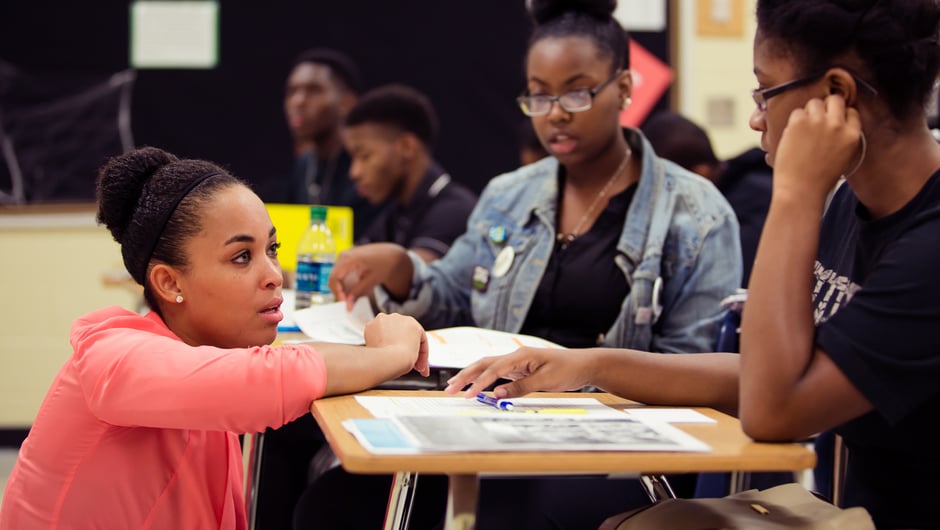
Leading a New Chapter in New Orleans
A new report shows promising progress in New Orleans schools post-Katrina. What will it take to sustain this momentum?
Thirteen years after the floods of Hurricane Katrina devastated New Orleans and its school system, students have made dramatic gains in academic performance, high school and college graduation rates.
These are among the findings of new study published last month by Tulane University’s Education Research Alliance, which examines the long-term outcomes for students attending all publicly funded schools in New Orleans in the years following Katrina, between 2005 and 2014. The study includes schools governed by the state Recovery School District, as well as schools managed by the Orleans Parish School District.
When comparing student data from the years following Katrina with data from previous years, the study found a sharp increase in student achievement, as measured by a 11-16 percentile increase on standardized test scores. The percentage of students who graduated from schools in these districts increased by 3-9 percent, along with an 8-15 percent increase in college-entrance rate. Of those college-bound students, the number who are graduating college also increased 3-5 percentage points. Researchers at the Education Research Alliance point out in their report that it is uncommon to see programs and policies improve all of these outcomes for students.
This progress didn’t happen overnight. It is the result of an unprecedented community-wide effort to rebuild an entire system from the ground up—a complex partnership between local leaders, families, state government, and nonprofits, including Teach For America. Corps members and alumni have been on the ground in the Greater New Orleans - Louisiana Delta region for nearly three decades, working alongside the community to expand educational opportunities for children, and helping to reimagine schools post-Katrina.
Though sustaining this rapid pace of progress has proved more challenging in recent years—with the last three years of data showing a slight decline in student outcomes—the report shows promise that students are benefiting from the innovation happening across the city’s schools. So much work remains to be done. Still, the findings from the report fuel our optimism that providing students with access to an equitable and excellent education can change their life trajectories.
In light of this recent study—and as another anniversary of Hurricane Katrina approaches—we checked in with Joy Okoro, the region’s current executive director and 2008 GNO alum, and Kira Orange Jones, former executive director of the region and 2000 South Louisiana alum, to hear more about the city’s progress and what’s next for New Orleans schools.

What are the most important takeaways from the recent report on student progress in New Orleans post-Katrina?
Joy: It’s inevitable as the ebbs and flows of progress happen. After being on a steady incline for almost a decade, now marks a pivotal moment for us to determine what happens next. We should face the current reality of our city-wide plateau, and continue to celebrate the successes and wins of all educators—including our corps members and alumni across the city. The progress captured in this report should lead us to raise the bar again for what we know students can accomplish. We’ll need to maintain the belief and optimism that enabled change a decade ago. We are here because of the progress that we have made, not in spite of it.
Kira: While there is so much work left to be done, I think this particular report is promising because it reminds us that ten years of collective efforts are actually yielding promising results and we’re heading in the right direction. At the same time, there’s always a productive paranoia I witness among strong education leaders across New Orleans, always questioning if what they are doing is actually enough for students. From my view, this orientation—never settling for enough—is one of the most important characteristics of any successful change effort, and a critical enabler of progress here. With this comes the recognition that the next stage of the work will require an even broader set of solutions as we pivot from a system that no longer fails our most vulnerable children to a world-class system where every child has the opportunity to fulfill his or her greatest potential.
What can we learn from the progress in GNO in terms of collective leadership?
Joy: There is strength in networks and our network continues to grow. With over 1,300 alumni and corps members, our local TFA network has been and continues to be part of the city-wide story and strategy. Our impact and influence is strong and I believe strengthened by proactive and intentional collaboration with schools and other partners in this work. We must seek to broaden the tent to better serve children.
We have hundreds of alumni working in partnership with the community at all levels—in the classroom, leading schools, in state leadership, and serving on the Orleans Parish School Board. Nearly half of the students in New Orleans are taught or led by TFA alumni. It is now up to us to ensure that we continue to deliver a quality education for kids and that we continue to raise the bar. We must sink our heels in a bit further and determine as a city what we are moving toward over the next decade.
Kira: One of the most significant enablers of progress over the last ten years has been bold leadership. Courageous, grounded, and deeply responsive leadership matters at all levels of any change effort, and I think New Orleans has this in spades. If you ask our alums the story of how this came to be, we often talk about working towards finding a set of shared values and goals, continuously rising expectations and being willing to learn and adapt to the changing needs of our students and community. There are all important aspects of developing collective leadership.
What’s next for Teach For America’s work in New Orleans?
Joy: We are thinking more expansively about our footprint and want to be in more schools so that we can impact more children. We must re-focus our energy on schools and classrooms being the primary drivers of change. We have a tremendous responsibility to support and connect educators across the city, in partnership with other orgs that fuel their efforts. We also need to implement strategic innovations in a few key areas such as early-career teacher development and cultivating mid-level leaders inside of schools, as well as integrating diversity, equity, and inclusion practices within schools. We must lean into learning as a collective, and model our aspiration for diversity, equity, and inclusiveness both inside and outside of schools.
What do you want future corps members to know about teaching in New Orleans?
Joy: I want corps members to know that this work is demanding but rewarding and necessary. Teaching is the most profound act of leadership and if we stand a chance at ensuring our young people change the very fabric of this country, it starts with a meaningful and catalytic experience inside of a classroom. New Orleans will be our nation’s first model for equity and excellence because we have built a public education system that consistently produces students that achieve and lead.
Sign up to receive articles like this in your inbox!
Thanks for signing up!
Content is loading...







